1
The outbreak of the First World War in August 1914 was met with pride and enthusiasm by many Torontonians. By 1918, 70,000 recruits had marched down the city's streets on their way to war; 13,000 of them never returned.
The war was constantly a part of daily life at the school - both from within class and without. Boarding school enrollment dropped, the German teacher 'disappeared', students were taken to the Exhibition to see the soldiers, and regular visiting lecturers expounded on the virtues of the Red Cross. The students took the initiative with fundraising parties and plays, such as 'Malice in Kulturland' (a satirical political commentary on Germany).
Still, life went on for Havergal students, with regular classes, assemblies and social activities. Day girl enrollment continued to grow, so that between 1916 and 1918 (during the wartime boom benefiting many in the city), another location was secured at Bloor Street just west of St George Street - this time for exclusive use as a Junior School.
2
Seniors' Privileges1914
Jarvis Street, Toronto, Ontario, Canada
 Credits:
Credits:Dr. Catherine Steele 1928 Archives, Havergal College
3
Dinner Toasts1915
Jarvis Street, Toronto, Ontario, Canada
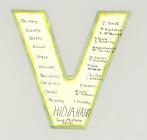 Credits:
Credits:Hilda Hahn 1915
Dr. Catherine Steele 1928 Archives, Havergal College
4
Tuition and Entrance FeesFree education was available to the Toronto public after the Public School Board was set up in 1850; public high schools would begin admitting girls in 1865. As a private educational facility, however, Havergal College charged tuition fees. A 1916 school prospectus made the case for prospective parents:
"Is it wise to look for a cheap school or for one of higher price? You do not risk your physical life with a cheap surgeon. Why should you risk the future of your girl's health, mental development and spiritual outlook, at her most formative age, in a cheap school with a cheap teacher?"
Fees ranged from basic schooling ($10-$25 per term, depending on grade level) to extra-curricular activities such as pianoforte, dancing, and elocution lessons.
5
Application FormCirca 1917
St. Clair Avenue, Toronto, Ontario, Canada
 Credits:
Credits:Hahn Fonds
Dr. Catherine Steele 1928 Archives, Havergal College
6
Tuition Fees1917-1918
St. Clair Avenue, Toronto, Ontario, Canada
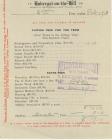 Credits:
Credits:Hahn Fonds
Dr. Catherine Steele 1928 Archives, Havergal College
7
War in the Imperial ClassroomAs with other schools in the Toronto area during the war, Havergal students were exposed to themes of patriotism and duty in their classes. Following the day to day events of the war became a part of current events classes, and various topical lectures and entertainments were brought in, keeping the war in the forefront of everyone's minds.
Canada's growing importance on the world stage was often referred to, and was a motif in many of the girls' work. One visiting lecturer in 1916 told students: "Several times the imperial side of the work has been referred to. Here are men from all parts of the Empire meeting together and learning to appreciate perhaps for the first time each others' point of view. ... I wonder if you realize at home, what honour has come to Canada, not only through the magnificent valour of the troops, but also through the work of the non-combatants of this country. The wonderful backing which is being given to all war work ...is daily increasing the respect and admiration felt on all sides for the Dominion."
8
Current events notebook: technology of warfare11 October 1915
Jarvis Street, Toronto, Ontario, Canada
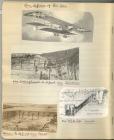 Credits:
Credits:Marjorie Orr 1918 Scrapbook
Dr. Catherine Steele 1928 Archives, Havergal College
9
Current events notebook: King George V26 October 1915
Jarvis Street, Toronto, Ontario, Canada
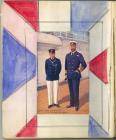 Credits:
Credits:Marjorie Orr 1918 Scrapbook
Dr. Catherine Steele 1928 Archives, Havergal College
10
Current events notebook: Map - 'In the wake of the Germans'2 October 1915
Jarvis Street, Toronto, Ontario, Canada
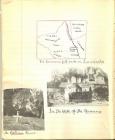 Credits:
Credits:Marjorie Orr 1918 Scrapbook
Dr. Catherine Steele 1928 Archives, Havergal College
11
Current events notebook: Zeppelin technology1916
Jarvis Street, Toronto, Ontario, Canada
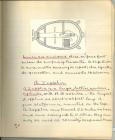 Credits:
Credits:Marjorie Orr 1918 Scrapbook
Dr. Catherine Steele 1928 Archives, Havergal College
12
Current events notebook: Toronto soldiers on paradeMarch 1916
Jarvis Street, Toronto, Ontario, Canada
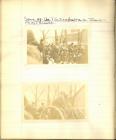 Credits:
Credits:Marjorie Orr 1918 Scrapbook
Dr. Catherine Steele 1928 Archives,Havergal College
13
'Canada to England': student poetry1916
Jarvis Street, Toronto, Ontario, Canada
 Credits:
Credits:Dr. Catherine Steele 1928 Archives, Havergal College
14
'Havergalians' on the HomefrontThe war effort played a pivotal role in the Havergal curriculum - both formal and informal. From educational lectures, to knitting drives, to fundraising bazaars, the Havergal community was kept consistently busy with war work supporting the homefront. The school faculty clearly made an effort to keep the girls' duty to the war effort uppermost in their minds and daily schedules.
A survey of archival materials indicates that knitting and filling Christmas stockings was the most popular activity by far. In 1916, a student poetess wrote in the yearbook: "Sing a song of knitting/A bag full of yarn/Four and twenty school girls/Kept safely out of harm;/When the socks are finished/ They'll send them far away,/To the soldiers standing/In wet trenches all the day."